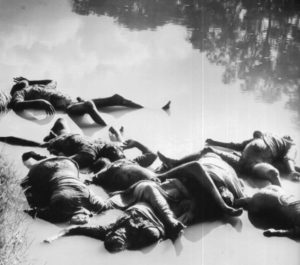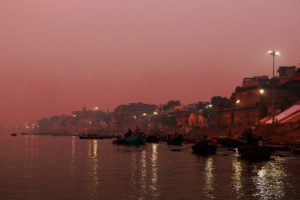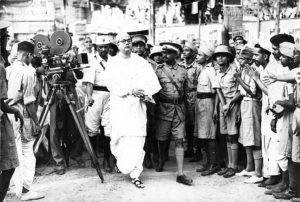“We can learn from history, but we can also deceive ourselves when we selectively take evidence from the past in order to justify what we have already made up our minds to do.’’—Margaret MacMillan.
Don’t get me wrong! I do not intend to say that India as a country does not exist at present, in fact it is much better placed at the moment than major chunk of the countries in the world. My attempt here is to emphasize what we must learn from history and revisit the mistakes or shortcomings that we historically had and through self reflection move together in the direction which does not again lead us to the ignorance of the past. And I must tell you, history tells us that India was not a country, how much is it now, will need an analysis of the past
This quote sums up the transitional phase in the development of a highly profound and impactful civilization that Indians believe in . We seem to only selectively learn from the past in order to justify our acts.
Whether it is the Dalit caste based fiasco in Bhima-Koregaon protests reaching onto Mumbai or such other frequent caste- based agitations or such other religious- supremacy uprisings or confusing the identify for a community of world conquest with ours. All these get intertwined in our not so old recent past
The core British colonial project was the exploitation of India as the centre of Britain’s world trade system and world dominion. But in order to rule such a large and diverse landscape the British needed an educated Indian class who would join with them in their imperial enterprise, by assimilating British cultural ideals and historically this cultural assimilation has been the attempt of most of the dominant civilizations in past.
For achieving this, they set about the ideological and practical construction of modernity in India. Time, space, geography, caste, religion – all should be redefined by the supposedly superior knowledge, science and ethics of the imperialists. This meant both physical and mental mapping.
Winston Churchill famously said, ‘There is no such thing as India’
Sir George Everest, for example, after whom the world’s highest mountain Mount Everest is named, made a great survey to measure the subcontinent down to the last foot, lugging cumbersome theodolites up Tamil temple gopuras, and traipsing with huge segmented metal measuring rods on ox-carts across the Punjab.
The imposition of British legal system was another crucial introduction, along with codifying Hindu and Muslim laws as well as the detailed categorizing of castes in Indian society, as customary laws were caste-based. Like the Kushans and the Mughals, the British wanted to know what made their subject to tick.
The British saw it as their Christian duty to wage war against ‘superstition’
Texts such as the Bhagavadgita or the Tamil Tiruvasagam were given Christianized interpretations by missionary scholars, quarrying the monotheistic or monist strands in Hindu thought
“Attitudes to traditional Indian religious customs and practices also became much more defined. The British saw it as their Christian duty to wage war against ‘superstition’, and clamped down hard on archaic customs such as child marriage, blood sacrifice and Sati Pratha”. Sometimes, no doubt, they were justified; but sometimes, as exemplified in their attack on the ancient Gond culture in Orissa, all they managed to do was, to undermine people’s identity and cohesion. “
As for Hindu religion itself, from having been a source of fascinating admiration, the somewhat misleading term ‘Hinduism’ came into common parlance as a description of India’s religious systems.
This connects with the growth in the nineteenth century of the idea that Indian religion was one world religion, like Christianity and Islam. Texts such as the Bhagavadgita or the Tamil Tiruvasagam were given Christianized interpretations by missionary scholars, quarrying the monotheistic or monist strands in Hindu thought.
There was and still there is some truth in such ideas, though the great medieval teaching texts of the Shaivas and Vaishnavas could equally well be used to demonstrate that those were separate religious systems, with different supreme deities and different sacred texts, rituals and mantras.
The creation of modern Hinduism was therefore to some extent both a colonial construct and a reaction to colonialism. In the hands of Hindu reformers, the Christianizing aspect came to the fore, and offered a congenial bridge to the colonisers for the educated Indian elite.
When the great Bengali philosopher and nationalist Swami Vivekananda was hailed as the star of the World Parliament of Religions in Chicago in 1893, Hinduism in its modern sense had arrived. The British project also involved giving a British education to the native ruling class, who would interpret their own culture to the Indian masses in British terms. One curious aspect of this was that the study of English literature became the canon in India before it was institutionalized in England.
The choice of exemplary texts, though, was off its time, replete with colonial ideas about ideal manhood. Shakespeare, however, with his pronounced scepticism about power, was not included. Ironically, he ended up being gratefully received by Indian radicals as a liberating tool, as Michael Madshudan Dutt argued in his brilliant essay on the Hindu and the Anglo-Saxon in 1865: ‘’the British must go, but they can leave us Shakespeare’’!
THE IDEA OF INDIA
Even at the time of the Mahabharat War, believed to have taken place about five thousand years ago there were several peoples. It was the British Raj which first conceived of India as a political unity; a country rather than a state of mind.
For the future of independent India, one critical area of the British imperial project lay in the very idea of India itself. In reality it was JAMBU DWEEP and BHAARAT KHAND. India, as we know it now, had never existed as one unified state at any time in its history.
Although Ashoka, for example, had claimed to rule as far south as the Krishna river, and the Kushans, Guptas,Gulams and Mughals had all wielded power across a great area of northern India between Afghanistan and Bengal, it could never stay as one entity for a long time.
Even at the time of the Mahabharat War, believed to have taken place about five thousand years ago there were several peoples. It was the British Raj which first conceived of India as a political unity; a country rather than a state of mind.
Winston Churchill (who counted daredevil adventures among the Pathans in his youthful experiences) famously said, ‘There is no such thing as India’. But that opinion was not shared by other European great observers of India. Over many centuries, for them, India – for all its diversity of peoples, languages and religions – was a unitary civilization.
Over many centuries, for them, India – for all its diversity of peoples, languages and religions – was a unitary civilization.
In the tenth century al-Biruni equated Indian civilization with all the lands between the Himalayas and Cape Comorin. The fourteenth-century poet Amir Khusro (an Indian Muslim of Turkish descent) speaks movingly of his love of his country, India, which he says includes people who speak Sindhi, Punjabi and Bengali, but also Tamil, Telugu and Kannada : all inhabit this ‘paradise on Earth’.
A similar idea of India can be found in the writings of Akbar’s biographer Abul Fazl, even though the Mughals never extended their rule over the south of the subcontinent.
The strong perception far back in time, then, is of a broad cultural unity. The British would make their own vital contribution to this. Look at any map of India in the British handbooks of the Raj, and you will see pink covering the lands from Burma to Baluchistan and from Bhutan to Kerala, bounded by the natural frontiers of the sea, the Khyber, the Himalayas and the eastern jungles.
Within the map, though, is the image of one of the most ingenious and adaptive empires in history, an immense patchwork loosely embracing almost a quarter of the population of the planet. In different colours are an amazing 675 feudatory and independent princely states (of whom seventy-three were ruled by rajas ‘entitled to salutes of eleven guns or more’). Two of them, Hyderabad and Kashmir, are each the size of a large European country.
This was the British solution to the diversity of India: an incredible political sleight of hand. An arrangement so extraordinary mind. But it was India.
JEWEL IN THE CROWN Astonishingly, even at the peak of their empire, the British were able to rule the most populous region on Earth with just 50,000 troops and a quarter of a million administrators.
Most of the day-to-day working of the empire was done by Indians, so they depended entirely on Indian cooperation; and as soon as that was withdrawn, the story was over for an empire acquired, as it was said in a disingenuous British understatement, ‘in a fit of absent-mindedness’.
That moment came with Indian disillusionment after the First World War, in which a million Indians fought for the king emperor and 50,000 died, and was confirmed by the massacre of Sikh demonstrators at Amritsar in 1919, from which the Indian perception of British fair play, goodwill and justice never quite recovered.

This is not to deny the complex and profound legacy of the British: above all, the English language, but also English ideas of secular law, education and constitutional government, the first attempt comprehensively to solve one of the great issues of Indian history – the source of secular authority.
For all the political struggles since 1947, Indian democracy has been a remarkable success in sustaining an open society and making astonishing inroads in such a short time into the deep-seated injustices of the caste system. In sixty years the idea of secular democracy has powerfully taken root. Another legacy was practical: the communications network
.

India is a huge country by British account; it is a 1000-mile journey by rail from Delhi to Calcutta, and the same distance from Calcutta down to Madras. Such developments also helped shape the political and psychological unity of India: indeed, perhaps the very possibility of a single Indian state only arose as a workable idea because the British made it so. But perhaps the most fateful legacy of the British was to open India irrevocably to a wider world: to force Indians to redefine their age-long civilization in terms of the secular ideals of the West.








